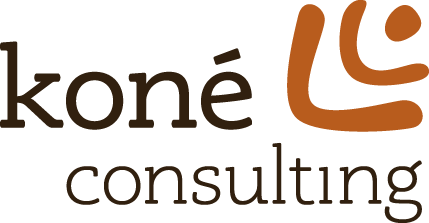Pivoting to virtual workspace
Like everyone in the world, this week at Koné Consulting we are adjusting to a new COVID-19 normal - every day it seems. Our headquarters are in Edmonds, WA, just a 17-mile drive from the Life Care Center of Kirkland, the epicenter of the U.S. epidemic. And, like everyone, we have been in contingency planning mode, mostly with our clients - some of whom were expecting us to travel and host events around their states in the coming weeks. I have been reading all of the articles you have; about how this global health crisis has brought out the best of humanity (spontaneous meals on wheels efforts) and the worst of humanity (toilet paper…why?); about the politicizing of public health information and the action or inaction of government agencies we count on in times of crisis; and about the importance of relying on data and science to help us make decisions when things are uncertain.
COVID-19 concerns and breaking news have been disrupting and distracting for us these past few weeks, for sure. But I have also been reflecting on how relatively little our small business has had to pivot because every day we operate as a virtual company. Our employees have always worked from home offices (or their local coffee shop) when they aren’t on a client site. We already use technology to help us keep work flowing smoothly in our value streams, and to help us maintain a sense of team and camaraderie. We’ve been doing work virtually for 10 years now at KC, because it’s greener, more efficient, and better for work/life/family balance, and we’ve learned a few things I thought might serve you during this unprecedented time.
Advice about working virtually:
1. Most work can be done virtually, but not all work can. We like working virtually for all of the reasons I mentioned above, and because it keeps us healthier now, too, but we’ve learned working in-person at times is also critical. Human connection is still ultimately a physical one. So, there are situations when we meet in person, like:
· Kicking off a new project with a new client and building trust. We have found nothing replaces meeting in person at least once when kicking-off a project with a new client to build trust quickly and meaningfully.
· When team-building is one of the objectives of the event. Sometimes the point is to get everyone in a work unit to set aside their regular work and come together for an important conversation. It’s just too easy for introverts to hide in a virtual meeting. If team-building, which is another form of developing trust between people, is one of the objectives, it’s better to wait until people can be in a room together.
· When we are gathering data from disenfranchised populations. Research shows the Internet is still less accessible for people who are low-income, homeless, affected by behavioral health challenges, or frail or elderly. So, when gathering information from people being served by health and human services programs, we prefer to do some kind of in-person interviews or focus groups if possible.
2. Set up some norms for virtual meetings. There are some excellent classes out there if you’re interested in honing your online meeting facilitation skills. I took one from ICA-USA called “Virtual Facilitation Online” that I recommend. Some of our norms include:
· For webinars with more than a few people, appoint someone to be the “producer” who can pay attention to participants needs through the chat feature, troubleshoot technical issues, and can help the presenter field questions.
· For routine team meetings, establish a norm for ending your thought. In the ICA training, we ended our thought by saying, “I am complete.” This might seem awkward at first - pick a phrase that feels natural to you - but it’s particularly important if you are using voice-only with no video and lack facial cues.
· If you are leading the meeting and you pose a question to the group, count to 10 in your head before you move on assuming no one had a thought. It takes people longer in a virtual environment to get their thought out. They may be fumbling for the mute button or weighing the urgency of their question against the embarrassment of asking a question in an unfamiliar group. They are also much more likely to be multitasking…
3. Keep virtual meetings as short as possible. Sitting in front of a computer screen as the mode of meeting participation takes more mental concentration than being in a room with other people experiencing the same senses, so don’t keep people tethered to their screens for more than two hours at a time. Even that is a marathon of a webinar. One is constantly being distracted by their environment and its hard work for your brain to stay focused on the virtual meeting content. When people are participating virtually in a meeting from different locations, it exponentially increases the distractions. For example, right now, I am listening to the roofers working on my neighbor’s house, and the dogs barking at them from my other neighbor’s yard. And my teenagers are about to rise from their COVID-19 extended spring break slumbers to start frying up something tasty smelling in the kitchen for breakfast. I’m going to need a break soon.
Need help pivoting to a virtual workspace? We’re offering facilitation for your virtual meetings, as well as 30% off our Koné Express Services: Solve A Problem or Get to Consensus Workshops.

